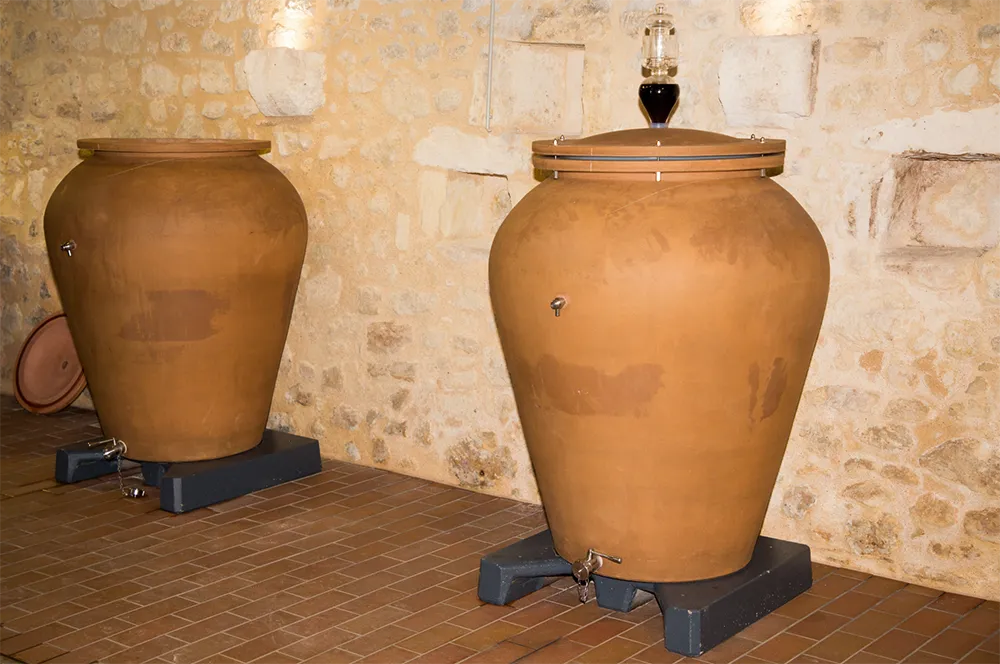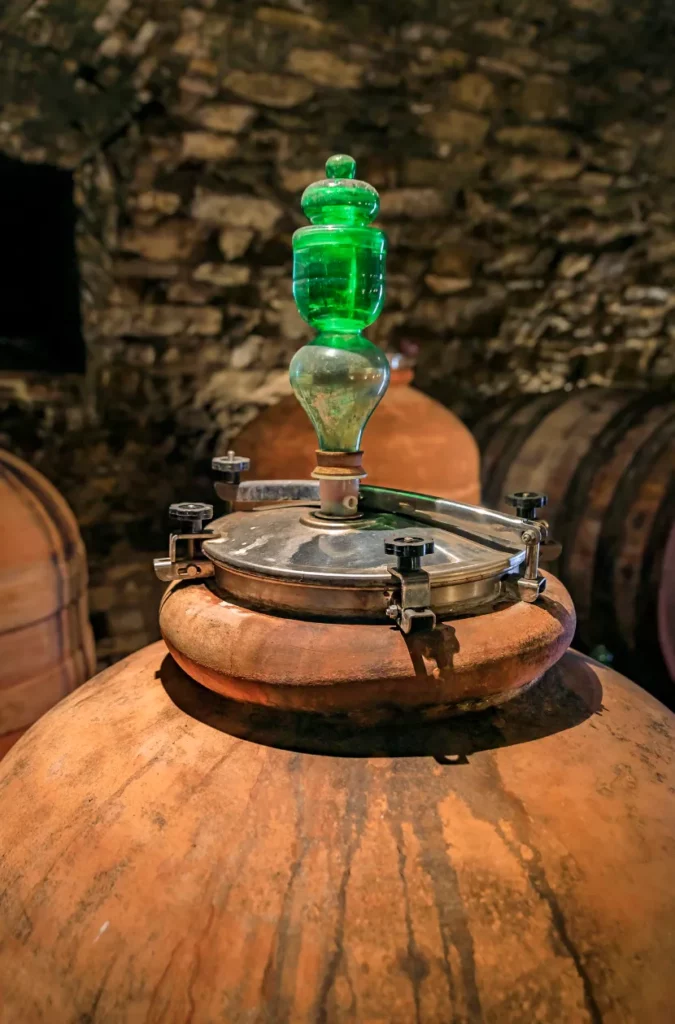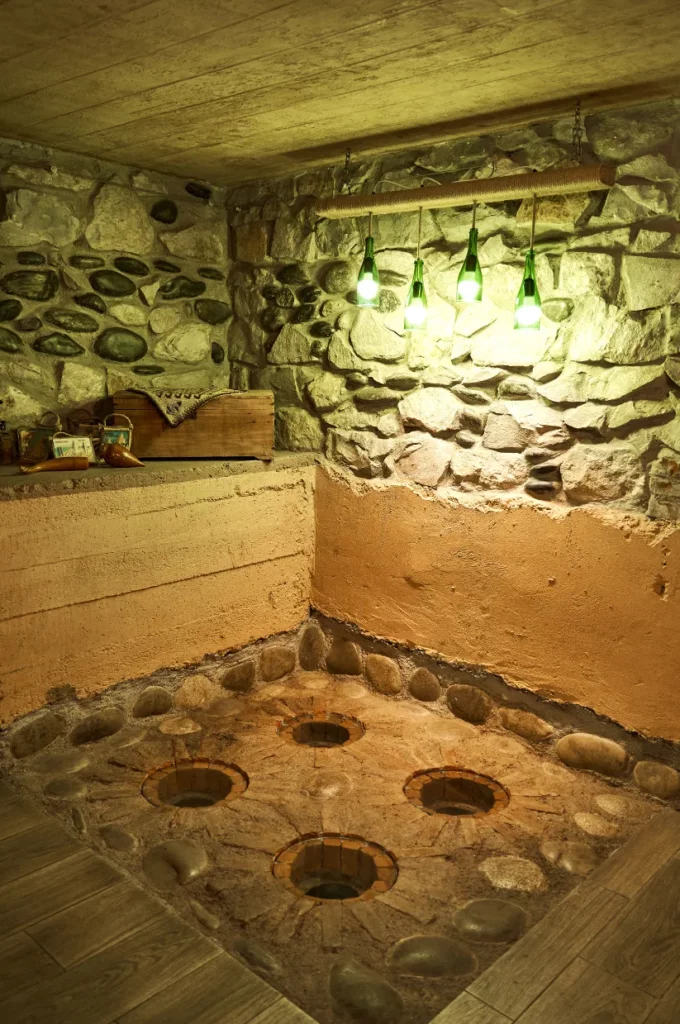Once the grape harvest is complete, the grapes undergo alcoholic fermentation. During alcoholic fermentation, the yeasts added to the must convert sugar into alcohol.
After this process is finished, the wine is stored in containers that allow for varying degrees of oxygenation.
The most commonly used containers are:
- Wood: Depending on its origin – Europe, America – and degree of toasting, it will yield different results.
- Concrete: Allows for temperature regulation during the maturation phase.
- Terracotta: Terracotta amphorae, which can be buried or not.
Index:
- What does ‘amphora aging’ mean?
- What are the advantages of amphora aging?
- What happens if the amphorae are buried?
What does ‘amphora aging’ mean?
When you read that wine is aged in amphorae, it means that instead of using wooden barrels, steel tanks, or concrete, the wine is matured in terracotta containers, namely amphorae.
Amphora aging is ancient. It was used in Georgia as early as 6000 BC. This millennia-old technique has only been rediscovered in the last thirty years.
Another country where this technique was used is Armenia.

In Italy, it was the Etruscans who introduced this material, also for wine storage. In Magna Graecia, amphora aging was already used.
An Italian pioneer in the use of amphora aging is Joško Gravner, who rediscovered this technique in 2000.
Gravner began to refine his wines in the Georgian style. The Gravner company is on the border between Italy and Slovenia.
What are the advantages of amphora aging?
Terracotta, as a material, does not impart aromas, as is the case with wood aging.

Another positive aspect is that amphora aging allows for micro-oxygenation without altering the wine’s organoleptic characteristics.
Furthermore, the use of amphorae allows for long macerations and less use of sulfur dioxide.
For this reason, organic/biodynamic producers use this material for aging.
Some producers ferment in terracotta amphorae.
In this case, the fermentation process and maceration on the skins occur naturally.
Other advantages of using amphora aging include:
- Amphorae do not need to be replaced after many uses.
- Terracotta prevents the spread of microorganisms and bacteria that live on the skins and are harmful to the wine’s organoleptic profile.
What happens if the amphorae are buried?
If terracotta amphorae are buried, the temperature remains constant.
This happens because the earth is a natural insulator. Burial promotes the action of yeasts that occur naturally during fermentation.
Usually, the amphorae are buried for a period of six months.
Do you know about underwater wine? You can find everything you need to know on the xtraWine blog.

Amo la buona cucina e le tradizioni enogastronomiche italiane, per me vino e dessert non sono solo un contorno ma la parte più interessante del buon vivere.













